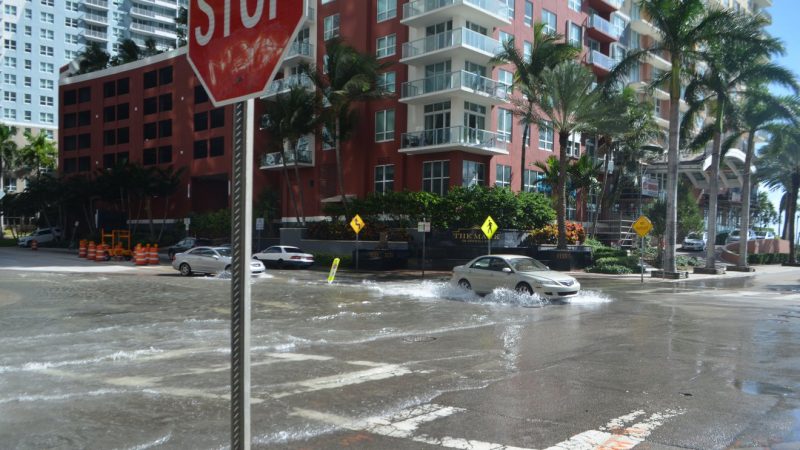
NASA, NOAA, USGS and other U.S. government agencies said on February 15, 2022, that sea level could rise as much in the coming 30 years as it did over the past 100 years.
These government agencies – which had implemented an interagency task force to study sea level rise – said that the coastal flooding will increase “significantly.” The group released a new report on February 15, titled Global and Regional Sea Level Rise Scenarios for the United States. Among other things, it concludes that – by 2050 – sea level along U.S. coastlines will rise between 10 to 12 inches (about one foot, or 25 to 30 cm) on average above today’s levels.
The release of the report was accompanied by an interactive tool for use by the public, which will let you visualize the report’s projections about sea level rise, across the U.S. Click here to go to the interactive tool.
The report – an update to a 2017 report – forecasts sea level to the year 2150. This is the first time these government scientists have offered near-term projections in sea level rise for the coming 30 years. A statement via NASA said:
Agencies at the federal, state and local levels use these reports to inform their plans on anticipating and coping with the effects of sea level rise.
EarthSky 2022 lunar calendars now available! Order now. Going fast!
Not a surprise
NASA Administrator Bill Nelson said:
This report supports previous studies and confirms what we have long known: Sea levels are continuing to rise at an alarming rate, endangering communities around the world. [The] science is indisputable, and urgent action is required to mitigate a climate crisis that is well underway.
The task force developed its near-term sea level rise projections by drawing on an improved understanding of how the processes that contribute to rising seas – such as melting glaciers and ice sheets as well as complex interactions between ocean, land and ice – will affect ocean height. Ben Hamlington at NASA’s Jet Propulsion Laboratory in southern California is one of the update’s lead authors. He commented:
That understanding has really advanced since the 2017 report, which gave us more certainty over how much sea level rise we’ll get in the coming decades.
NASA’s Sea Level Change Team, led by Hamlington, has also developed the online mapping tool. Hamlington said:
The hope is that the online tool will help make the information as widely accessible as possible.
Higher sea level = more coastal flooding
The Interagency Sea Level Rise Task Force projects an uptick in the frequency and intensity of high-tide coastal flooding, otherwise known as nuisance flooding, because of higher sea level. Nuisance flooding refers to low levels of inundation that don’t pose significant threats to public safety or cause major property damage, but can disrupt routine day-to-day activities. This sort of flooding also puts added strain on infrastructure systems such as roadways and sewers. And it can cause minor property damage.
The report also notes that if greenhouse gas emissions continue to increase, global temperatures will rise even higher, leading to a greater likelihood that sea level rise by the end of the century will exceed the projections in the 2022 update.
Nadya Vinogradova Shiffer, who directs the NASA Sea Level Change Team at NASA Headquarters in Washington, said:
It takes a village to make climate predictions. When you combine NASA’s scenarios of global sea level rise with NOAA’s estimates of extreme water levels and the U.S. Geological Survey’s impact studies, you get a robust national estimate of the projected future that awaits American coastal communities and our economic infrastructure in 20, 30 or 100 years from now.
The NASA statement also noted that:
A separate forthcoming report known as the Fifth National Climate Assessment, produced by the U.S. Global Change Research Program, is the latest in a series summarizing the impacts of climate change on the U.S., and it will in turn use the results from the Global and Regional Sea Level Rise report in its analysis. The Climate Assessment is slated to publish in 2023.
Learn more about sea level and climate change here.
Bottom line: NASA, NOAA, USGS and other U.S. government agencies project that the rise in ocean height in the next 30 years could equal the total sea level rise seen over the past 100 years.











